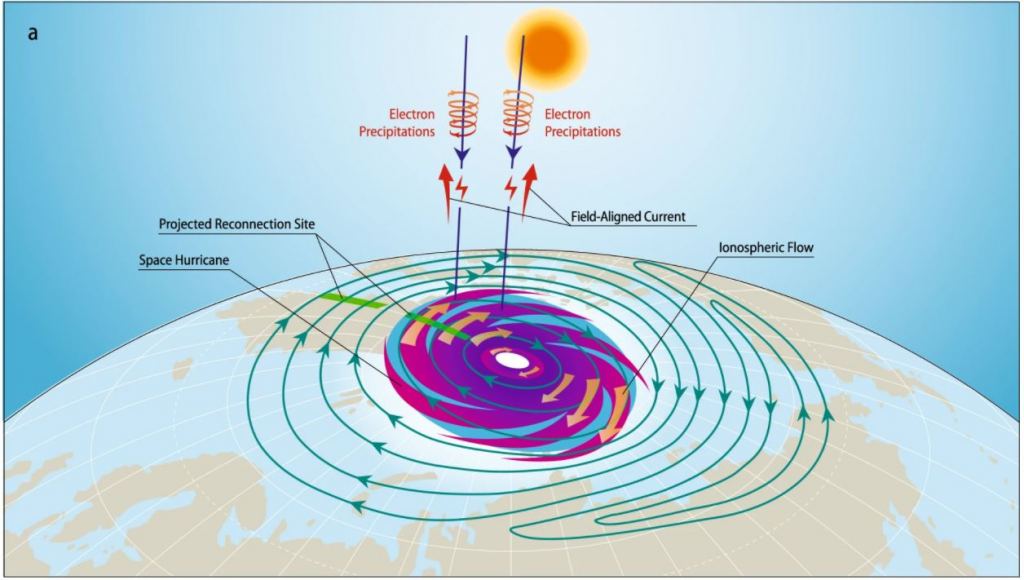Earth’s Atmosphere Can Generate a “Space Hurricane”
By Nancy Atkinson
There are hurricanes in space.
Researchers looking through archival data found evidence of a previously unobserved phenomenon — a giant swirling mass of plasma above Earth’s northern polar region. The “space hurricane,” as the science team calls it, churned for hours, raining down electrons instead of water.
“Until now, it was uncertain that space plasma hurricanes even existed, so to prove this with such a striking observation is incredible,” said Mike Lockwood, space scientist at the University of Reading in the UK, in a press release.
The disturbance, which was captured in satellite data from 2014, resembled and behaved like hurricanes on Earth. But this rotating storm was a 1,000 km-wide swirling mass of plasma, hovering several hundred kilometers above the North Pole. The space hurricane was spinning in an anticlockwise direction, had multiple spiral arms, and lasted almost eight hours before gradually breaking down.
Unlike geomagnetic storms which come from strong solar activity and variations in the solar wind, this event occurred during a period of low solar and geomagnetic activity.
“The hurricane imparted large energy and momentum deposition into the ionosphere despite otherwise extremely quiet conditions,” the team wrote in their paper, published in Nature Communications. “The observations and simulations reveal that the space hurricane is generated by steady high-latitude lobe magnetic reconnection and current continuity during a several hour period of northward interplanetary magnetic field and very low solar wind density and speed.”
However, Lockwood said these space hurricanes must be created by unusually large and rapid transfer of solar wind energy and charged particles into the Earth’s upper atmosphere.

Astronomers have spotted hurricanes on Mars, Saturn, and Jupiter, which are similar to terrestrial hurricanes in the low atmosphere. There are also “solar tornados” — solar gases swirling in monstrous formations deep within the Sun’s atmosphere, which can be several Earth radii wide.
But space hurricanes like the one captured in 2014 have not been reported in the upper atmosphere of the other planets in our Solar System. And although vortex structures of aurora, called auroral spirals, have been observed above Earth, they are not unusually intense and do not have similar features of a typical hurricane.

The researchers said that the fact the space hurricane occurred during a period of low geomagnetic activity suggests they could be more relatively common within our solar system and beyond.
“Plasma and magnetic fields in the atmosphere of planets exist throughout the universe, so the findings suggest space hurricanes should be a widespread phenomena,” said Lockwood.
The finding also highlights the importance of improved monitoring of space weather, which can disrupt GPS signals and data from other satellite systems.
The team included scientists from China, the USA, Norway and the UK, using observations made by four DMSP (Defense Meteorological Satellite Program) satellites.
The post Earth’s Atmosphere Can Generate a “Space Hurricane” appeared first on Universe Today.

March 5, 2021 at 09:16PM
via Universe Today read more...

Post a Comment